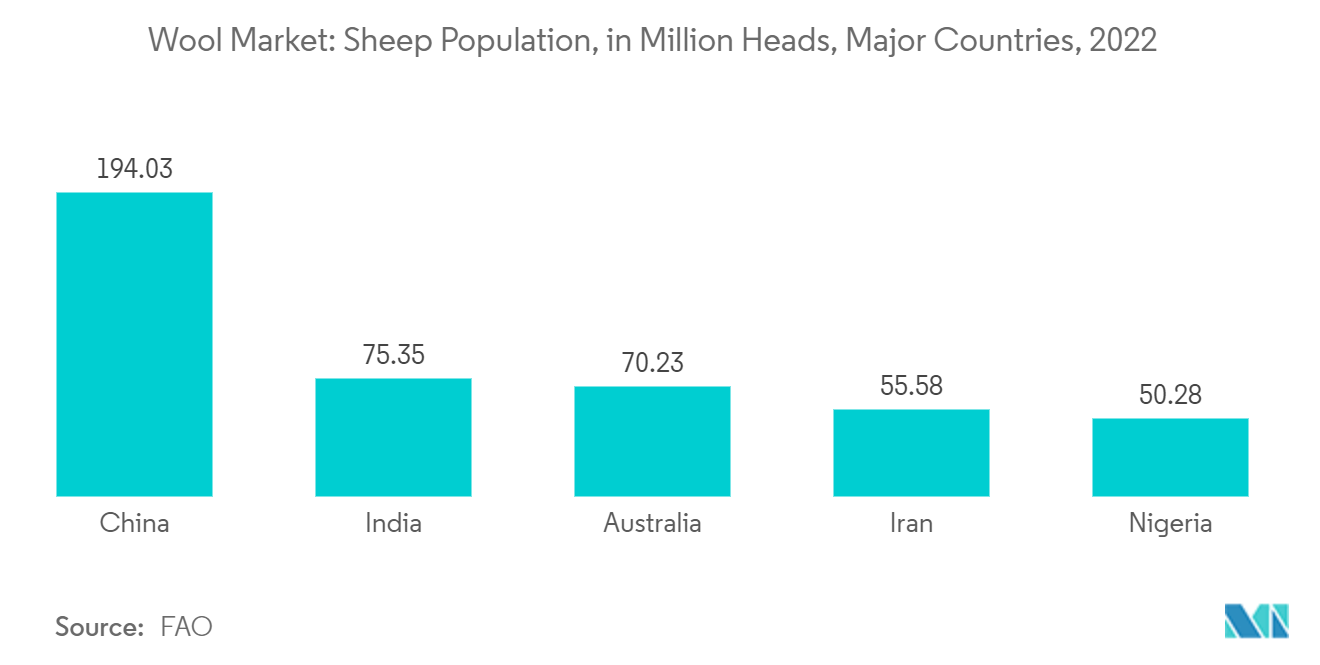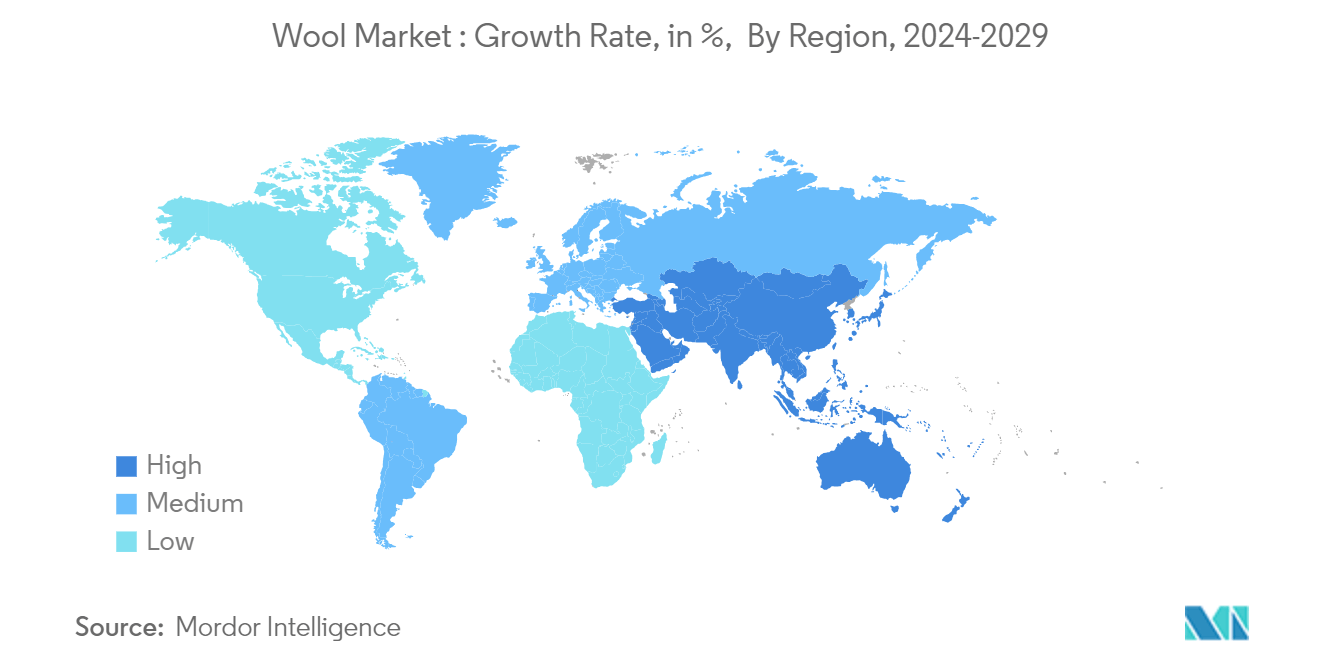Market Trends of Wool Industry
Institutional Efforts are Bolstering the Quality and Production of Wool
Wool can be used for different purposes, depending on the coarseness of the fiber and other characteristics such as fiber length and crimp. Very fine wool is primarily used for clothing, while coarser wool is used in carpets and furnishings such as curtains or bedding. Some sheep breeds are raised for their meat, while others are raised for their wool and sometimes for both. Texel and Dorset breeds are good choices for meat production. Merino, Rambouillet, Blue-Faced Leicester, and Corriedale breeds are among the best-known wool sheep. The momentum gained by government initiatives and marketing strategies of prominent textile players led to higher usage of wool in the textile and other industries. To ensure transparency and quality and to facilitate the flow of information about wool to assure buyers of the qualities being purchased, institutions like IWTO have developed many traceability systems. One such system is the National Wool Declaration Integrity Program. The National Wool Declaration is an industry initiative recognized globally for its transparency and traceability from the farm. The NWD Integrity Program (NWD-IP) is an extensive program of desktop audits and on-farm inspections to build a wool pipeline and consumer confidence in Australian wool. With all these initiatives put forth by the regulating authority, wool is fetching a higher price because sheep rearing for wool is also increasing.
According to the FAO, the global sheep numbers in 2022 rose to 1.296 billion heads, up by 8.65 million from 2021. China has the largest sheep population, followed by India and Australia. According to the IWTO, greasy wool production rose by 1.1% in 2022, to 1,977.3 mkg, following a 1.7% increase in 2021. The global wool production in clean weight terms increased by 15,600 metric tons or 1.5% to an estimated 1,051.2 mkg clean in 2022. Thus, the increasing sheep population and the institutional initiatives to ensure quality are projected to boost wool production during the forecast period.

Asia-Pacific is Expected to Dominate the Market
Wool is a commodity traded globally, and its diversity in the market is vast and ever-evolving. With most of the wool sold with an IWTO Test Certificate, the buyer's confidence in quality is guaranteed. Asia-Pacific is dominating the wool market with high production and exports. According to the FAO, Australia, China, and New Zealand are the major wool producers. According to the ITC Trademap, in 2020, Australia accounted for the highest exports, worth USD 1,595,320 thousand, followed by China, accounting for exports worth USD 1,543,868 thousand in 2020, contributing 36.2% of the total exports.
India exports woolen yarn fabrics, hand-made carpets, and ready-made garments to Italy, South Korea, the United Kingdom, the United States, Sri Lanka, Germany, Australia, the United Arab Emirates, Sweden, the Netherlands, Oman, Afghanistan, and Tanzania, among others. The United States is a major importer of woolen products from India, with exports valued at USD 855.6 million in 2020-2021. Woolen fabrics are mainly exported to Italy, South Korea, the United Kingdom, the United States, Sri Lanka, Germany, and Australia. During 2020-2021, these countries imported INR 513.9 crore (USD 64.5 million) worth of yarn fabrics from India, representing a share of 64% of the total yarn exports. Italy was the major importer during the same period at 17.5%.
According to the ITC Trademap, in 2021, the trade value of wool exported from Australia to China amounted to about USD 1.9 billion. This was the highest trade value of wool exported from Australia that year. Australia is the leading global supplier of wool and the world's largest wool export nation, accounting for 39% of global wool exports. Given the dominance of fine Merino production in Australia, Australian wool is typically retailed as high-end fashion and lightweight knitwear. With the trend toward eco-friendly, sustainable, and biodegradable parameters in the Asia-Pacific apparel industry, the demand for wool is growing as it provides comfort. Therefore, the growing consumption of wool among various population groups and favorable production through sheep breeds support the segment's growth during the forecast period.


